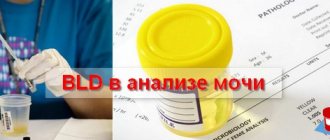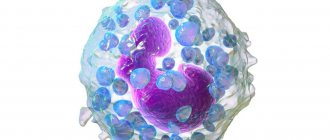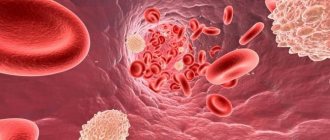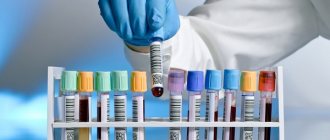Urine (urine) is an aqueous solution of metabolic end products excreted by the kidneys. Normally, the liquid has a yellowish tint and does not contain sediment or other foreign matter - blood, pus. Crystallization of salt in the urine indicates a violation of the acid-base balance or kidney function. To determine the composition of urinary sediment, laboratory urine tests are performed.
Is there a normal level of salts in urine?
The content of the article
The degree of crystalluria can vary in the same person and depend on the moment of collection of the material for research. A competent attending physician will warn the patient that a single or periodic (up to two pluses) detection of salt crystals in the urine of an adult or child is an acceptable variant of the norm, called transient crystalluria.
Its intensity is influenced by the amount of fluid drunk the day before the test, the consumption of certain foods (an abundance of meat products, chocolate, strong tea, coffee, etc.), as well as physical activity.
By type, salt crystals can be divided into:
- calcium oxalate (oxalates);
- phosphate;
- urate;
- cystine;
- mixed (oxalate-urate, phosphate-urate).
All of the above options can occur in a healthy person, and in view of the above, we can safely say that you should not panic when you see positive values for this indicator in the study form.
However, the salt precipitate is not always determined in acceptable quantities. When should you start worrying? Let's draw the line between normality and disease.
Prevention
Many, having learned about the presence of urates or oxalates in the urine, think that this necessarily indicates the presence of a disease. This is fundamentally wrong. Experts consider such sediment to be a minor diagnostic sign and pay attention to it only when there is regular precipitation of salts.
Therefore, preventive measures, as well as treatment, include:
- selection of a balanced diet;
- sufficient intake of water into the body, especially with its sudden loss (physical activity, profuse sweating, vomiting or diarrhea);
- timely detection and adequate treatment of inflammatory diseases of the excretory system.
Thus, the precipitation of mineral salts will have diagnostic value only with constant observation of this phenomenon and in the presence of corresponding symptoms from the organs of the urinary system.
Meanwhile, this sign cannot be completely ignored, since it may indicate the development of urolithiasis, metabolic disorders, various types of inflammatory phenomena, as well as the presence of autoimmune processes in the body.
Dysmetabolic nephropathy
If salts are regularly identified during the research process and, in addition to laboratory data, there are complaints and objective signs of disruption of salt metabolism processes, the question of making a diagnosis of dysmetabolic nephropathy (DMN) is raised.
DMN is a group of metabolic dysfunctions that occur with a pathologically high degree of crystalluria and subsequent damage to the structural elements of the kidneys. Speaking about children, it is worth mentioning that in them, DMN accounts for approximately 26-63% of all diseases of the urinary system.
DMN is divided into primary and secondary. The primary one is genetically programmed and develops more intensively. Early complicated by urolithiasis (urolithiasis) and chronic renal failure. Nephropathy of secondary origin is a consequence of a metabolic defect in general.
Urolithiasis
Causes of dysmetabolic nephropathy
DMN is a syndrome provoked by a complex of factors. The most common are intoxication due to various infections, intense physical activity on the body, long-term use of medications, a monotonous diet and deficiency of certain nutrients.
For children, additional reasons may be previous late toxicosis of pregnancy in the mother, fetal hypoxia and neuro-arthritic diathesis. The listed factors are relevant for secondary nephropathies. Primary, as mentioned earlier, are caused by heredity.
In particular, the development of oxalate DMN (oxaluria), which makes up the bulk of crystalluria, is characterized by a previous lack of potassium, magnesium, vitamins A, B6, E, an excess of vitamin D as a consequence of the treatment of rickets, as well as an increased dietary intake of oxalates. Oxaluria is often detected against the background of chronic pancreatitis, pyelonephritis, enteritis, colitis, Crohn's disease, diabetes mellitus, and dysfunction of the hepatobiliary system.
Hippuric acid crystals
Quite rarely, amorphous crystals of hippuric acid, which is synthesized directly in the body, precipitate. It serves to bind benzoic acid (toxic to humans in high concentrations) that enters the gastrointestinal tract with plant foods.
Many crystals of hippuric acid salts are formed when eating large quantities of berries, especially blueberries and lingonberries, taking salicylates and benzoic acid (with food or for diagnostic purposes).
In addition, the causes of precipitation of hippuric acid salts can be diabetes mellitus and putrefactive processes in the intestines.
Manifestation of dysmetabolic nephropathy
In relation to children, it should be noted that symptoms can be observed already in the first month of life, but more typically gradual, onset and progression gradually. Crystalluria is detected only by ordering a general urinalysis, often according to indications for another disease. However, attentive parents can pay attention to the appearance of sediment in the urine, its turbidity and difficult to wash off plaque on the walls of the pot.
Adult patients and children with DMN are prone to:
- frequent headaches;
- periodic arthralgia (pain in the joints);
- obesity;
- skin manifestations of allergies.
More specific signs that can be detected with nephropathies:
- stabbing pain in the lumbar region;
- high fatigue;
- disturbance of urination in the form of increased frequency or pain;
- enuresis, as a common symptom in young patients;
- discomfort in the perineal area;
- prolonged increase in temperature to 37.0 – 37.5C;
- bloating.
Laboratory diagnostics, which will be focused on by the doctor (local therapist, pediatrician, urologist, nephrologist), includes a list of necessary studies:
- general analysis, functional tests and biochemical examination of urine;
- urine culture for microflora;
- Ultrasound examination of the bladder, ureters and kidneys.
Ultrasound most clearly reflects the degree of morphological damage to the structures under study by crystalline inclusions, and determines the presence of large stones in the areas of visualization.
It is important, after the above, to understand that the patient or parent of a small child should not try to assign a diagnosis to themselves without additional consultations with specialists, so to speak, not try to treat the tests. Exactly, just as you should not neglect the doctor’s conclusion if, after completing the examination, he came to a certain conclusion.
How is dysmetabolic nephropathy treated?
The main points of treatment are:
- optimization of the daily routine and moderate physical activity;
- adequate fluid intake;
- balanced diet;
- specific drug therapy prescribed by a doctor.
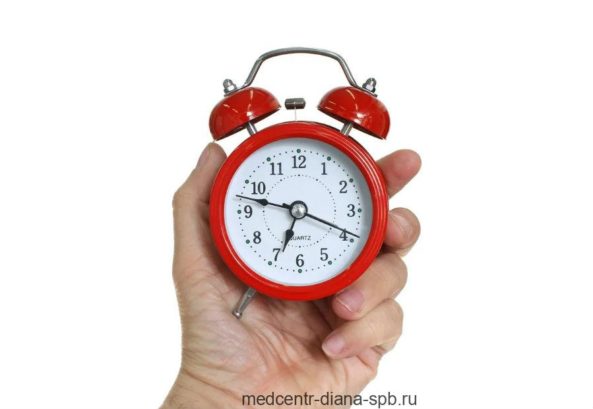
Optimizing your daily routine
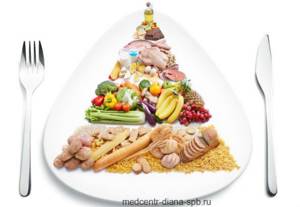
Balanced diet
Drinking plenty of water is the optimal initial step in the treatment of any type of DMN; it helps reduce the level of soluble substances per unit volume of urine. One treatment option is to increase the volume of fluid consumed at night, since urine becomes most concentrated at night.
However, even this harmless technique is indicated only after consultation with a specialist. The drinking regime can be strictly adjusted in people who have a history of diseases of the cardiovascular system or crystalluria in their case occurs against the background of acute or chronic renal failure. In these cases, excess fluid can worsen the prognosis of concomitant diseases.
The therapeutic diet for each variant of DMN is selected accordingly.
1) Oxaluria requires the patient to adhere to a potato-cabbage diet and remove sorrel, spinach, cranberries, beets, carrots, cocoa, chocolate and concentrated meat products (broths, jellied meats) from the diet. Enrich the menu with dried apricots, pears, and prunes. Pharmacotherapy is represented by a group of membranotropic agents and antioxidant drugs.
2) The urate type implies the exclusion from the diet of foods enriched with purine bases: dishes from the liver, kidneys, meat broths, peas, beans, nuts, cocoa. Prefer dairy products and plant-based foods. Medicines that reduce the production of uric acid are indicated.
3) Phosphaturia therapy involves a diet without phosphorus-rich foods - cheeses, caviar, liver, legumes, chicken, chocolate.
4) Cystinuria is treated with a diet with a complete absence or sharp limitation of cottage cheese, fish, eggs, meat, including methionine and sulfur-containing amino acids, but these substances are necessary for the body, so this diet cannot be used for a long time. After about a month of diet therapy, it is recommended to expand the menu and bring it closer to the usual, however, still strictly exclude cottage cheese, fish dishes and eggs. In addition to the diet, antioxidants and medications that inactivate pyridoxine are prescribed.
Correction
Conservative therapy
In the vast majority of cases, dietary recommendations are sufficient for the disappearance of crystalluria - drinking plenty of fluids, a balanced diet of plant and animal foods. Patients with hereditary hyperoxaluria are prohibited from taking foods rich in oxalic and ascorbic acids. People with amino acid metabolism disorders are prescribed a strict diet with the maximum possible limitation of tyrosine, leucine, and tryptophan.
In case of drug crystalluria, discontinuation of the drug or reduction of its dosage is required. Conservative therapy for crystalluria directly depends on the cause:
- Vitamins, microelements.
Vitamin B6 and magnesium can suppress the crystallization of oxalates, so they are prescribed for oxalosis. To prevent phosphaturia caused by secondary hyperparathyroidism, vitamin D preparations (cholecalciferol) are used. - Antibacterial agents.
For urinary tract infections, fosfomycin trometamol, penicillin antibiotics (amoxicillin) and cephalosporins (cephexime) are used. - Allopurinol.
This drug suppresses the formation of uric acid. It is prescribed for gout and patients undergoing chemotherapy to prevent acute urate nephropathy, a typical complication of tumor breakdown syndrome. - Preparations for alkalinizing urine.
Sodium citrate or sodium bicarbonate are used to treat many tubulopathies accompanied by tubular acidosis and genetic disorders of amino acid metabolism, as well as to dissolve urate and oxalate stones. - Cysteamine.
This drug reduces the intracellular content of cystine, so its use is indicated for patients with cystinosis and primary cystinuria. - Litokinetics.
For small stones, the use of alpha-blockers (tamsulosin) and calcium channel blockers (nifedipine), which relax the smooth muscles of the ureters, which promotes the spontaneous passage of stones, is justified.
Surgery
For patients with urolithiasis, depending on the size of the stones, their shape, location, various methods of removal are indicated - shock wave lithotripsy (destruction by directed ultrasound), laparoscopic or open surgery. For cholelithiasis, laparoscopic cholecystectomy is performed.
Forecast
By adhering to the prescribed diet, water balance and medication therapy, the patient provides himself with a favorable prognosis for health and life, but in case of refusal of therapeutic methods, the natural result of DMN becomes pyelonephritis and urolithiasis.
In conclusion, it must be emphasized that the moderate presence of salts in the urine is not dangerous, especially if there are no specific manifestations of nephropathy, and the study was prescribed when another pathology occurred, such as a respiratory or intestinal infection, or for prophylactic purposes. In other cases, the best tactic is to consult a specialist, follow his instructions and, of course, lead a healthy lifestyle.
ONLINE REGISTRATION at the DIANA clinic
You can sign up by calling the toll-free phone number 8-800-707-15-60 or filling out the contact form. In this case, we will contact you ourselves.
If you find an error, please select a piece of text and press Ctrl+Enter
Drug detoxification
Drug detoxification is carried out in two modes: regular and ultra-fast. As usual, doctors maintain adequate functioning of the internal organs, administer an infusion, and allow the body to get rid of the drug on its own.
During ultra-fast detoxification from salts, massive infusions are carried out with forced diuresis and the appointment of hardware cleaning methods. This technique is used in cases where the patient needs to quickly get rid of withdrawal symptoms, cleanse the blood and urine of drug metabolites and protect organs from toxic damage. Ultra-fast detoxification is carried out only in a hospital under the supervision of a doctor.
